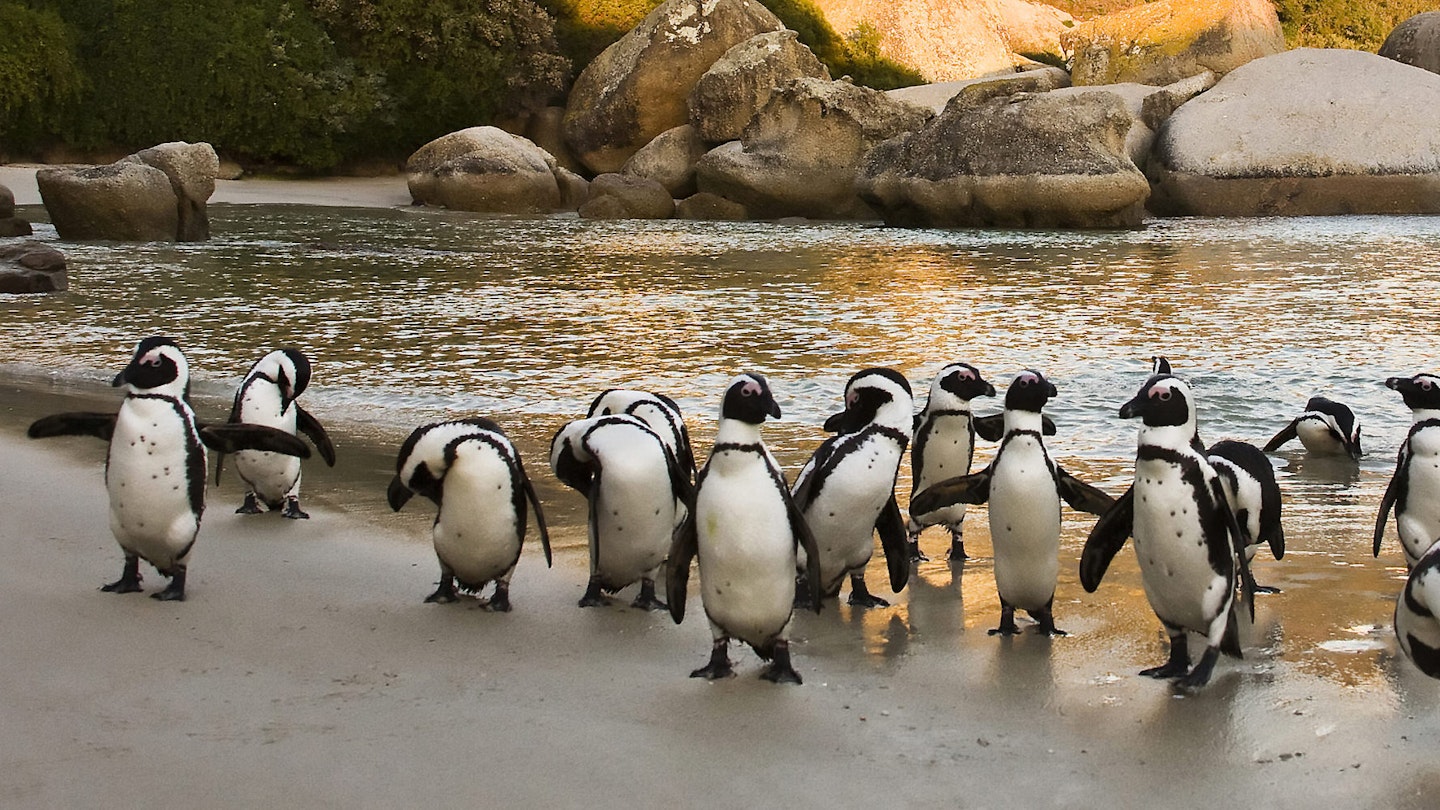Explore Cape Town’s Urban Wildlife
Blessed with a spectacular natural setting, Cape Town is undoubtedly one of the world’s most scenically beautiful cities. With iconic attractions like Table Mountain National Park, the V&A Waterfront, and the new Zeitz Museum of Contemporary Art Africa, the city certainly has much to offer. However, what many visitors to the Mother City miss out on is its remarkable urban wildlife. Overshadowed by South Africa’s more famous Big Five, it’s often overlooked that Cape Town is a dream destination for wildlife enthusiasts.
From African penguins and fur seals to southern right whales and rock hyraxes, here’s our comprehensive guide to five of Cape Town’s fascinating urban fauna and how to experience them.
African Penguin
African penguins, historically known as jackass penguins due to their braying sounds, are the only penguins native to the African continent. Standing at a height of just 68-70cm and weighing between 2-5kg, they are surprisingly small compared to their larger relatives. These remarkable birds can swim at speeds of up to 20km/h and dive to depths of 130m in search of fish, crustaceans, and small squid. Unfortunately, African penguins are currently classified as endangered, with their population plummeting from four million in the early 19th century to approximately 55,000 today, despite protective measures.
Where to see them: The lively penguin colony at Boulders Beach in Simon’s Town, just 40km south of Cape Town, is the best spot to observe these charming birds. From a mere two breeding pairs in 1983, the colony has grown to about 3000, although this number is declining rapidly. Visitors can enjoy viewing the penguins up close from designated boardwalks without disturbing their natural habitat. There’s an entrance fee of R152, which contributes to the conservation of the penguins.
Southern Right Whale
Among the various species of whales visiting Cape Town’s waters, the southern right whale is the most commonly sighted. Recognizable by their callosities—rough patches of skin laden with barnacles—these magnificent creatures exhibit a long, arched mouth and a distinctive double blowhole. Averaging 15m in length and weighing up to 60 tonnes, they migrate annually from Antarctica to the Cape Town coast to calve, typically arriving from June to November.
Where to see them: The best chance to see these gentle giants is in False Bay. Optimal land-based viewing sites include Cape Point, Boyes Drive, and Clarence Drive, all offering stunning vantage points. For a close encounter, consider whale-watching excursions with Simon’s Town Boat Company or travel to Hermanus, acclaimed as one of the world’s top whale-watching destinations by the World Wildlife Fund. Here, whales can often be seen breaching close to shore, providing incredible viewing opportunities.
African Fur Seal
The African fur seal, previously known as the Cape fur seal, is the largest species among the fur seals. Characterized by their robust bodies and velvety coat of dark grey or brown fur, these seals are often seen dozing in the sun. Males reach lengths of approximately 2.3m and weigh around 200-300kg.
Where to see them: In Cape Town, these seals are accustomed to human presence and can usually be spotted at the V&A Waterfront, although the location’s odorous nature might not be pleasant for all. For a more engaging experience, join a boat tour or a seal-snorkeling excursion to Seal Island, located about 6km from the beaches of False Bay, where you can observe hundreds of seals in their playful habitat.
Rock Hyrax
Commonly referred to by locals as rock dassies, these furry herbivores are no larger than a groundhog. Interestingly, they are the closest living relatives to elephants. Rock hyraxes favor rocky environments where they find shade and shelter among large boulders, often basking in the sun.
Where to see them: You can spot these creatures at Table Mountain as they roam the rocky areas or even cohabitate with penguins at Boulders Beach.
Malachite Kingfisher
Home to over 610 bird species, Cape Town is a paradise for birdwatchers. Among the most colorful species is the malachite kingfisher. Despite being common in South Africa, their elusive nature makes them a sought-after sight for avid birders. At just 3cm in length, these tiny kingfishers are often difficult to spot, but their vibrant plumage of purple, blue, green, and orange makes them stand out.
Where to see them: Malachite kingfishers thrive in wetland habitats. You can observe them at Rietvlei Wetland Reserve, only a 15-minute drive from the city center, or at Intaka Island, a unique sanctuary located within a shopping center.





